Rebuilding Pompeii: Ancient Villa Revived From Ruins
For two decades, a team of archaeologists, architects, structural engineers, art historians, and gardening experts have been working hard to restore a 2,000-year-old villa in Pompeii – the Casa Dei Vettii.
Built in the second century BC, the house was buried beneath volcanic ash when Mount Vesuvius erupted in AD 79 and had suffered looting and flooding since its rediscovery in the 19th century. Finally, after a painstaking makeover, the ‘House of the Vettii’ has been restored to its former glory!
Uncovering Ancient Luxury: Exploring a Roman Villa's Erotic Frescoes
Discover a luxurious Roman villa that has been remarkably well-preserved, showcasing a glimpse into the high society of the time. The building is centered around a central courtyard, decorated with statues, columns, and basins around a fountain.
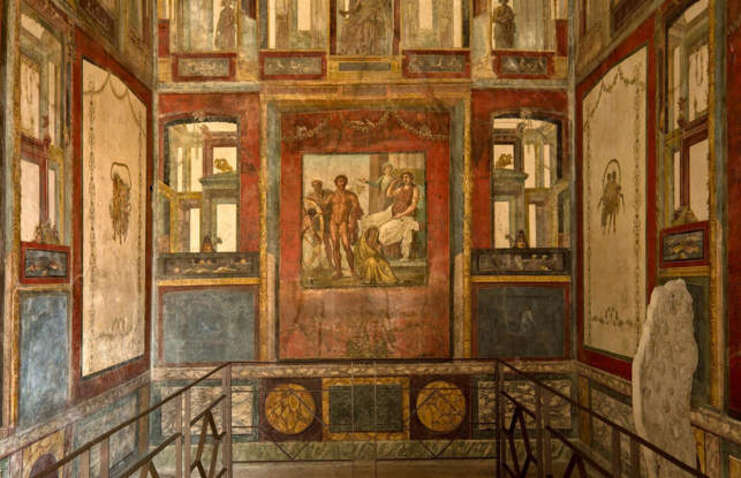
Source: Luigi Spina/Casa dei Vettii
The residence features a range of colorful decorations, from red, gold, and blue walls to vibrant paintings. The villa is best known for its erotic frescoes, depicting explicit classical scenes that remain iconic to this day. An exploration of this remarkable building is a must-see for anyone interested in Roman history.
Rich Freed Slaves and Their Fascinating Villa
Discover the story of Aulus Vettius Restitutus and Aulus Vettius Conviva, Whose story proves to be just as interesting as the spacer itself. The two former slaves became wealthy through Pompeii’s prospering wine trade and owned this remarkable and affluent villa.
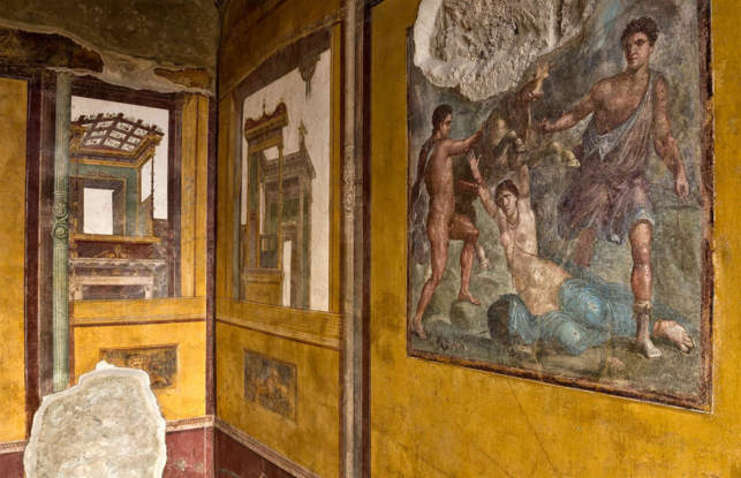
Source: Luigi Spina/Casa dei Vettii
It is speculated that the pair may have even run a small brothel from a room next to the kitchen, marked by a fresco of fertility god Priapus, weighing a large phallus beside a basket of gold. Uncover the secrets of this amazing villa, owned by two incredible freed slaves.
The Secrets of Ancient Roman Society
On 10 January, the Italian culture minister Gennaro Sangiuliano ceremoniously cut a ribbon in the colors of the Italian flag to mark the reopening of the villa to the public. Director of the Pompeii archaeological park Gabriel Zuchtriegel told the Guardian that this house was the perfect representation of ancient Roman society.

Source: Casa dei Vettii
Through the artwork, paintings, and statues, visitors can gain an insight into the culture and lifestyle of the Romans. It is an opportunity to explore the past and uncover the secrets of Roman civilization.
Long, Healthy Lives in Pompeii: Unveiling the Mystery
Life in Pompeii was anything but easy. With only half of the population making it past the age of 10, it’s a wonder how anyone could live a long and healthy life. But a recent analysis of older residents’ skeletons has revealed the secret to their longevity: a balanced diet.
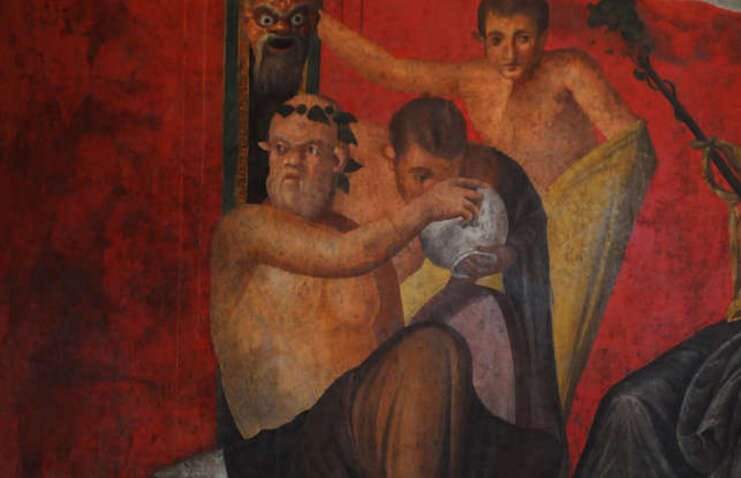
Source: Mario Laporta/AFP/Getty
This discovery came to light less than 10 years ago, and it has shed light on the lives of those who once called Pompeii home. Thanks to this surprising finding, we now understand the residents of Pompeii had more than a fighting chance at long, healthy lives.
Explore the Secrets in Ancient Herculaneum's Sewer!
Uncover a fascinating insight into the past when you explore the secrets in the ancient Herculaneum sewer! In 2011, archaeologists made a remarkable discovery – a 282-foot-long tunnel filled with 750 sacks of human excrement. This was thought to be the largest quantity of human excrement ever found in the Roman world!
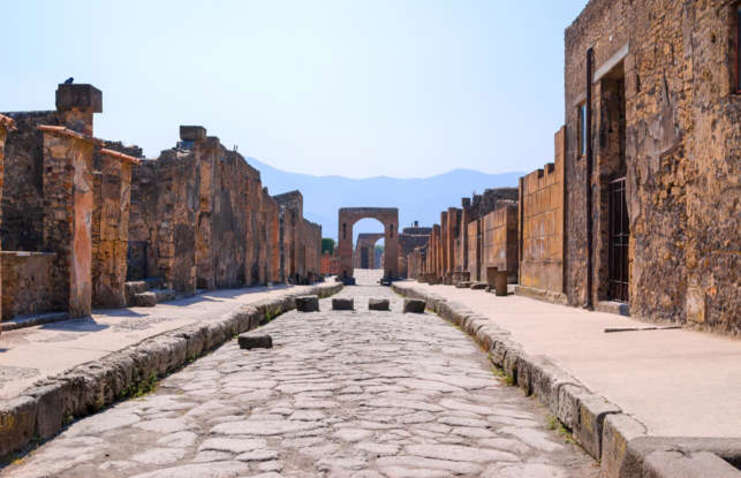
Source: Lautz
This remarkable discovery provided evidence about the diets of the ancient citizens and has allowed us to understand more about life in the past. So, take an exciting journey into the secrets of the past with a unique exploration of the ancient Herculaneum sewer.
Unearthing Ancient Habits: Unlocking the Secrets of Pompeii and Herculaneum
Archaeologists are digging into the past by exploring ancient trash – literally! Through the study of excrement, fish bones, pig bones, and egg shells that were once carelessly discarded down latrine holes, experts have been able to gain insight into the daily lives of Pompeii and Herculaneum’s citizens.
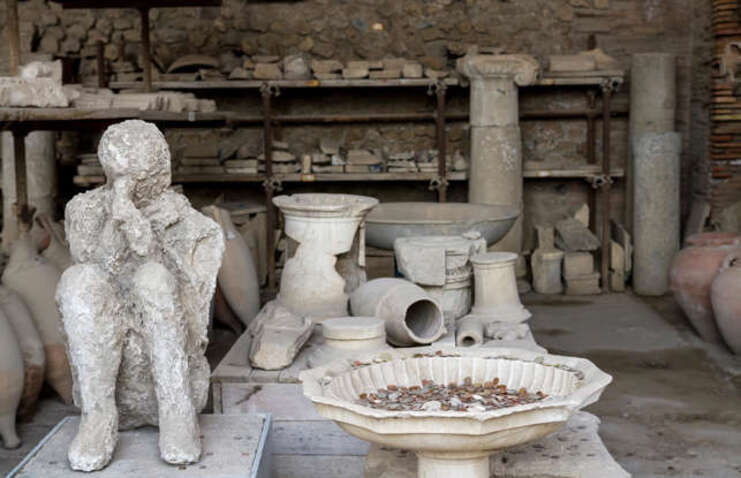
Source: Studio ART
Analysis has uncovered a diet rich in seafood, pork, eggs, seeds, and vegetables that reflect their local environment. So the next time you’re throwing away your food scraps, remember that you’re doing more than just tidying up – you’re part of an ancient cycle of life!
Ancient Political Graffiti in Pompeii
Uncovering the secrets of the past, archaeologists recently discovered ancient graffiti in Pompeii dating back prior to the catastrophic eruption of Mount Vesuvius. The walls were filled with political slogans, displaying the politically engaged people’s support for various candidates.
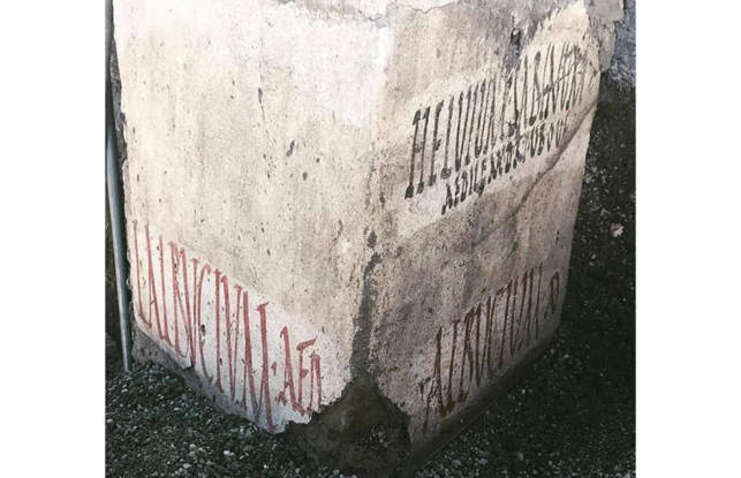
Source: pompeii_parco_archeologico/Instagram
This find provides an interesting insight into how citizens of the ancient city expressed their opinions, long before the advent of social media. It is a unique glimpse into the past and demonstrates how different, yet similar, our current world is.
Political Lives of Ancient Romans: Pre-Election Graffiti Discovered in Pompeii
Exploring the largely unexplored Regio V of Pompeii, archaeologists have discovered ancient pre-election graffiti. One such statement reads: “I beg you to choose Elvio Sabino, worthy of State, a good man”.
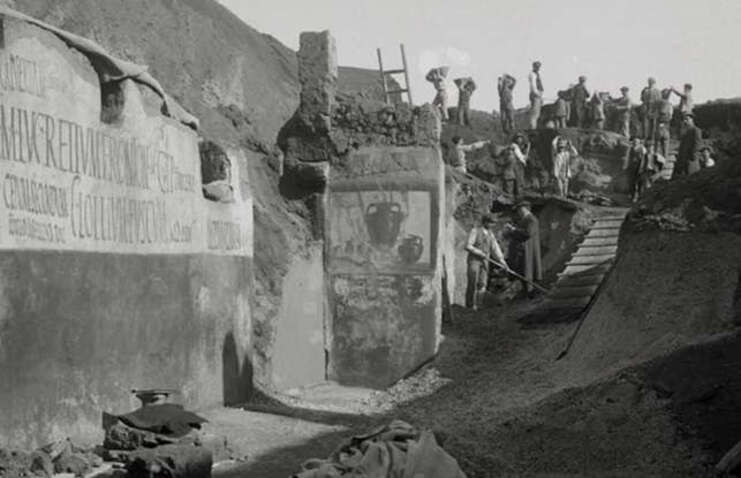
Source: pompeii_parco_archaeologico/Instagram
The findings not only give us a glance into the political lives of ancient Romans, but also into the painting techniques used by the city’s artists. However, It is thought that these writings were commissioned by local politicians in an effort to win more votes. This exciting discovery offers new insight into the lives of the ancient Romans.
Twins' Teeth Reveal Startling Evidence of Ancient Syphilis
A recent archeological discovery has uncovered a startling truth: It has uncovered evidence that some members of the population may have suffered from the bacterial disease syphilis.
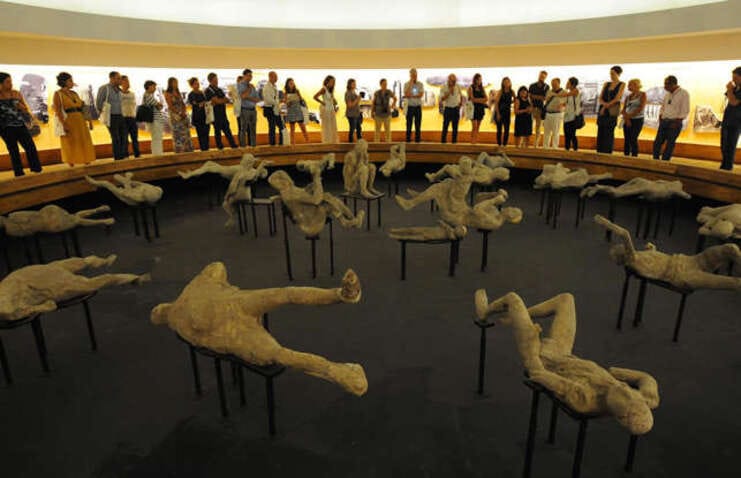
Source: Mario Laporta/AFP/Getty
Analysis of skeletons from the 1980s, including a set of twins, revealed signs of congenital syphilis through marks in the enamel of their teeth. This new evidence has shed light on the prevalence of the disease throughout history.
Rewriting History: Syphilis in Europe Predates Columbus
For centuries, it had been widely believed that the advent of syphilis in Europe was due to Christopher Columbus and his 15th-century voyage to the New World. However, this remarkable discovery has completely flipped this assumption on its head.
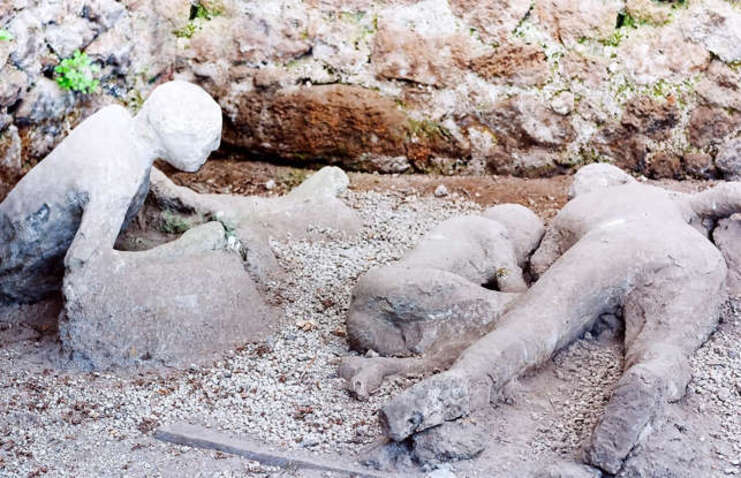
Source: BlackMac
Recent findings suggest that the disease had already been present in Europe for a considerable amount of time before Columbus’ voyage. This groundbreaking discovery is rewriting history and raising questions about this long-standing assumption.
Unbreakable Roman Family Bonds: Miracle Surviving Twins
Withstanding the test of time, Roman family bonds were truly unbreakable. A miraculous testament to this is the survival of the twins. Anthropologists believe that the fact these twins lived for as long as they did is evidence of the strength of Roman families.
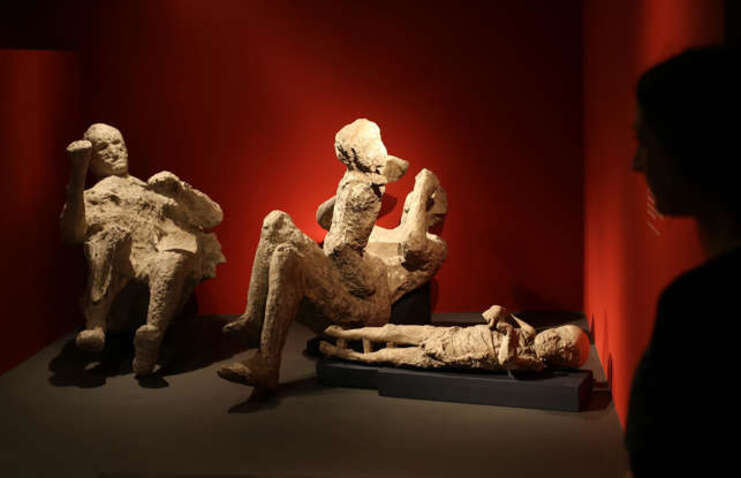
Source: Peter Macdiarmid/Getty
It would have taken constant nursing and attention to keep the twins alive. Thus, the Roman family culture of strong ties and support for one another is proven to be a remarkable phenomenon.
The Gruesome Fate of a Man Buried by Vesuvius
The tragic story of a man buried alive by the devastating eruption of Vesuvius in AD 79 has captivated the world for centuries. For the first time, we have a glimpse at his remains, frozen in time from the moment of his death.
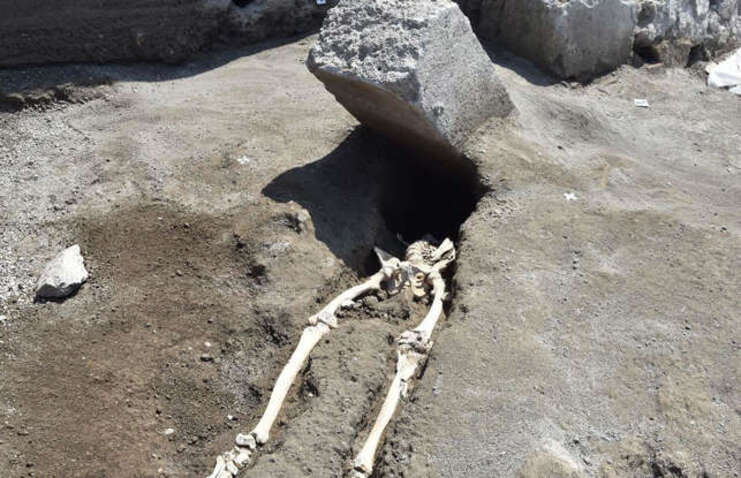
Source: SA Images/Getty
Uncovering the details of his gruesome fate has become a mission for historians and archaeologists alike. Despite the horror of his demise, this man’s legacy lives on, immortalized in the annals of history.
The Tragic Fate of the Unluckiest Man in History
When the eruption of Mount Vesuvius occurred, it brought about the tragic fate of an individual who has been christened as “the unluckiest man in history”. It was initially believed that he died when a giant rock hurled out by the volcano crushed him.
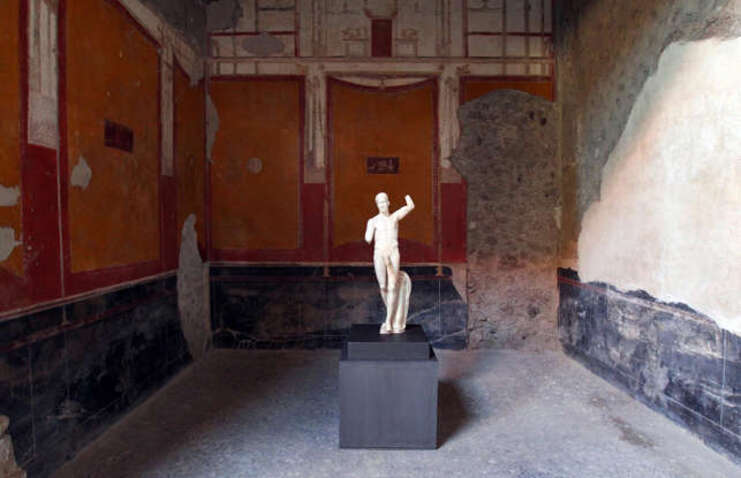
Source: Carlo Hermann/AFP/Getty
Further investigation revealed that he had been suffering from a leg infection that prevented him from walking, thus preventing him from escaping the disaster in time. This event was a tragedy that will remain etched in history forever.
Reevaluating a Mystery: The Case of the Smashed Skull
Scientists initially believed that the man had died from the impact of a giant rock crushing his skull. However, after further analysis, their conclusion has been reconsidered. Upon removal of the rock, the man’s skull was found to be undamaged, suggesting he had probably died from suffocation.
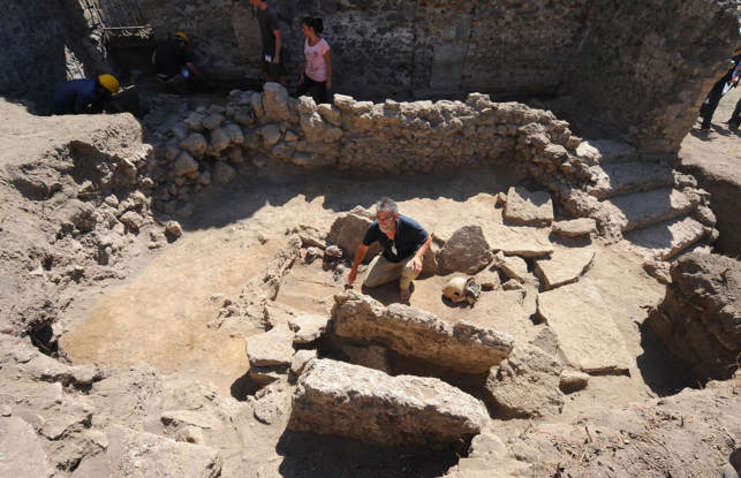
Source: Mario Laporta/AFP/Getty
It appears that the rock may have in fact collided with the skull after the man’s death. This remarkable discovery has prompted a re-examination of the mysterious circumstances surrounding the man’s demise.
The Mystery of Vesuvius: How Pliny the Younger's Letters Helped Us Understand the Eruption of AD 79
For centuries, the exact date of the eruption of Vesuvius in AD 79 eluded us. Until, that is, Pliny the Younger’s letters provided us with the crucial information we had been searching for.

Source: Eliano Imperato/Getty
His writings enabled us to unlock the secrets of the past and gain a better understanding of what happened that fateful day. For many years it was believed that Vesuvius erupted on 24 August in AD 79. Thanks to Pliny’s letters, we have been able to reassess this.
Pliny the Younger's Inscription Suggests an Earlier Date for Pompeii's Eruption
It was thought that the devastating eruption of Mount Vesuvius occurred on 24 August 79 AD, but a recently discovered inscription suggests otherwise. An inscription of charcoal writing, found at the site and translated to Latin, reads XVI K NOV – meaning “the 16th day before the 1st November” – which translates to 17 October.
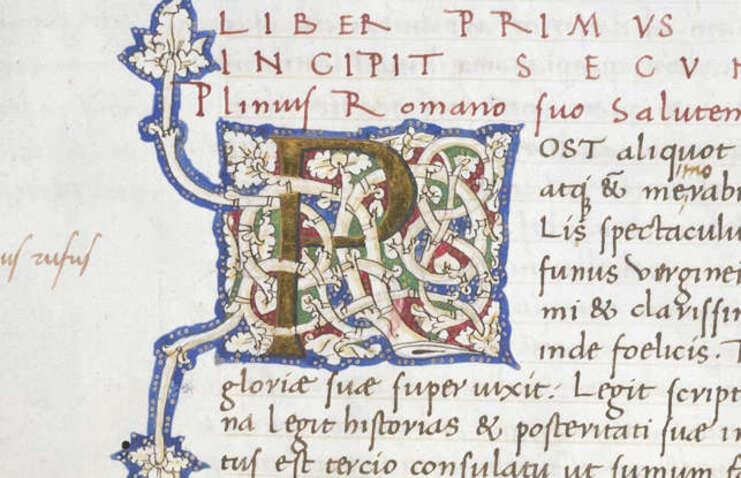
Source: Public Domain/The British Library
This suggests that the eruption of the volcano may have occurred more than a month later than previously thought. The image shows a part of Pliny the Younger’s original document that reveals this new finding.
Ancient Inscription Rewrites History
Italian authorities have declared that a newly discovered inscription, written in charcoal and believed to have been preserved under volcanic deposits since the year AD 79, has rewritten history.
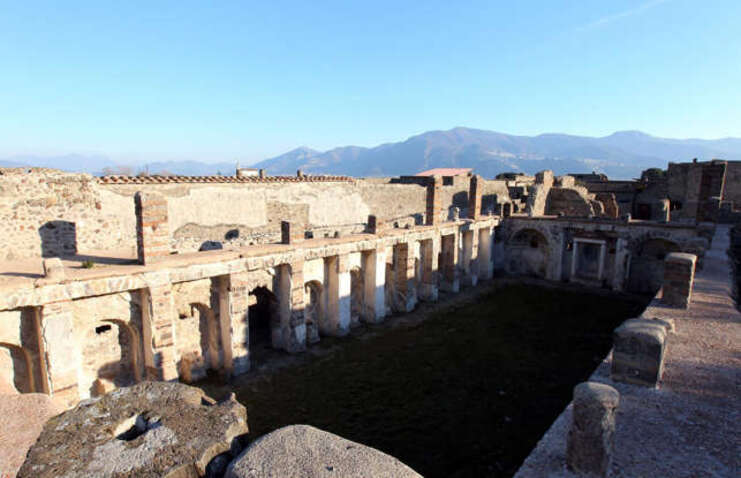
Source: Carlo Hermann/AFP/Getty
This remarkable discovery was only made possible due to the longevity of the volcanic deposits, ensuring that the inscription remains intact for centuries. Astonishingly, this new evidence has the potential to alter our understanding of history and has been met with great excitement from experts.
Staying put in the Face of Destruction - The Story of Pompeii and Herculaneum
As the volcano Mount Vesuvius roared to life on that fateful day in 79 AD, many people in the nearby cities of Pompeii and Herculaneum were faced with an unimaginable situation. Instead of fleeing in terror, they stayed in their homes and workplaces, knowing that their chances of survival were slim.

Source: BlackMac
This incredible story of bravery and courage, in the face of a natural disaster, has been passed down through the ages and stands as a testament to their courage and resilience.
Staying Together in Crises: Human Reactions to Volcanic Panic
When the volcano erupted, rather than panicking and fleeing, many victims chose to stay with their families and remain at home. This remarkable insight into human behavior in the face of a crisis sheds light on how individuals may respond in times of panic.
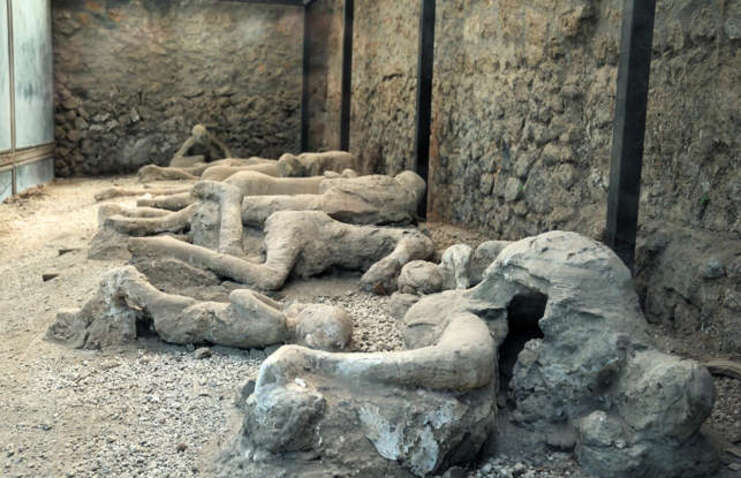
Source: Balounm
Analysis of the location and formation of recovered skeletal remains shows that these victims were bravely attempting to weather the storm together as a unit. Such a reaction to a potential disaster is not only inspiring, but perhaps a lesson to all of us on the importance of unity in times of trouble.
Uncovering Roman Family Structures Through Archaeology
Archaeology has shed new light on ancient Roman family structures. In one room of 13 people, at least six were found to be closely related, suggesting that families commonly lived in extended, multi-generational networks.
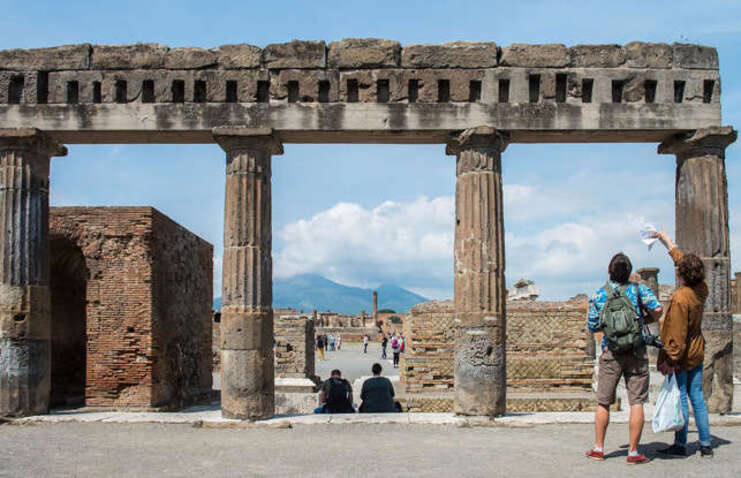
Source: Girogio Cosulich/Getty
Moreover, the close grouping of victims in some sites reveals further insight into the lives of ancient Romans – that for many, families were the cornerstone of their lives. Through archaeological discoveries, we gain a better understanding of how Roman families lived and interacted with one another.
Ancient Roman Religion: A Peacock-Filled Lararium Shrine
Uncovering the secrets of ancient Roman religion, archaeologists have recently discovered an awe-inspiring shrine, commonly known as a lararium, in a villa. This shrine was filled with captivating paintings of plants, snakes and a peacock – all of which were believed to represent specific gods or goddesses.
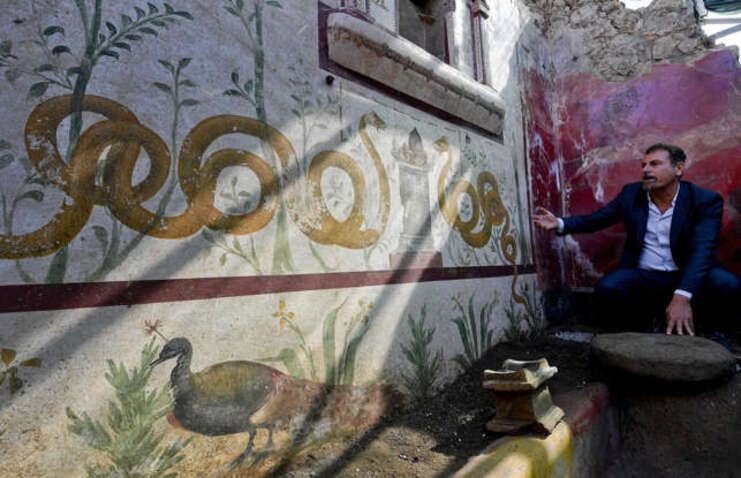
Source: Ciro Fusco/EPA
Lararium shrines were a common feature of many Roman houses, used to make offerings and prayers to the gods. Through this remarkable discovery, we can gain insight into the religious practices of the ancient Romans.
Uncovering Grandeur: A Lavish Home Shrine
A remarkable discovery was recently made, one that points to the wealth and grandeur of the home’s inhabitants. Inside its very own chamber was a shrine, a magnificent display of sophistication and elegance.
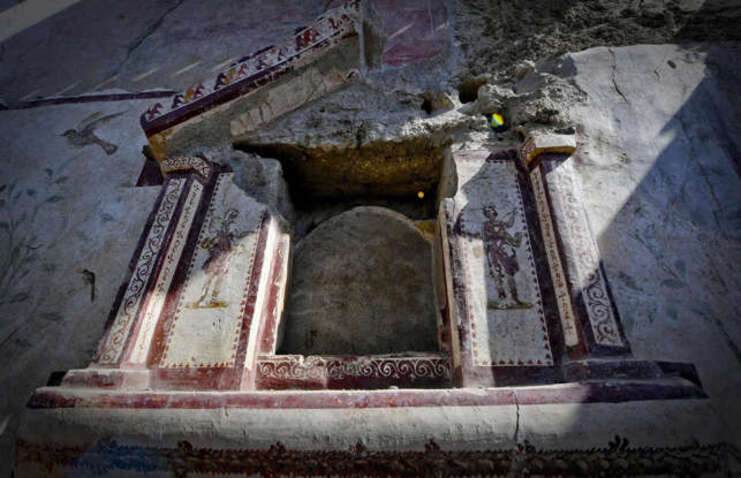
Source: Ciro Fusco
The walls of the chamber were adorned with elaborate decorations, and a raised pool was set in the middle of the room. This find is further proof that it was not uncommon for people to have their own shrines in their homes, however, few of them were as luxurious as this one.
Uncovering the Mysteries of Pompeii - A Great Archaeological Project
The Great Pompeii Project has recently uncovered an exciting new discovery – a complete and well-preserved shrine in areas of Pompeii which had never been explored before. Thanks to the advanced archaeological methods employed by the project, this treasure has been found and documented.
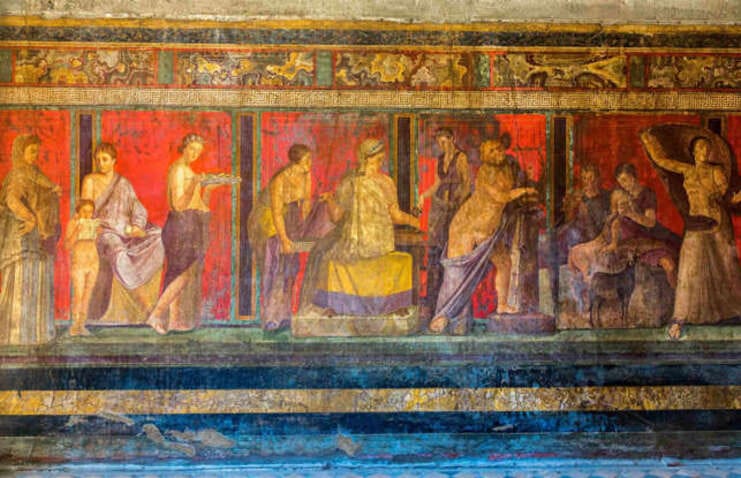
Source: Sergii Figurnyi
This feat would not have been possible in the past due to the lack of knowledge and resources available to earlier archaeologists. This incredible discovery offers a unique insight into the past, and is sure to provide invaluable information about the history of this ancient city.
Unearthing a Snapshot of Ancient Roman Life
Explore the past with the discovery of four new rooms of an ancient Roman home! Archaeologists have uncovered a snapshot of daily life in this historic city, offering a glimpse into the domesticity of Roman citizens before the eruption.
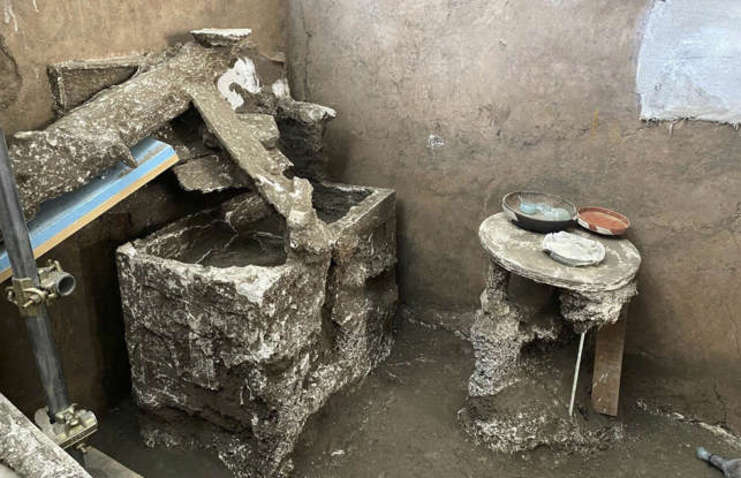
Source: Parco Archeologico di Pompei via AP
Among the artifacts found are a bedframe, three-legged table, ceramic plates, wooden cabinet, incense burner, and bronze pieces. Previously excavated in 2018, the objects in the northern area of Regio V capture an incredible moment in time. Step back in time and explore this incredible discovery!
Horrific Ways the Victims of Herculaneum Met Their End
A tragedy occurred in Herculaneum that saw a man killed by a 660-Ib stone being thrown from the sky. However, a new study has revealed that other victims weren’t much luckier as they were subject to horrific deaths due to the extreme heat.

Source: PLoS One
Their heads would explode and their blood would boil, resulting in a gruesome end. This shocking discovery has highlighted the devastating impact of the volcanic eruption and the immense suffering of those caught in its path.
Researchers Uncover Gruesome Fate of Pompeii Victims
Researchers have uncovered a gruesome fate of the victims of the Pompeii volcano eruption. In a study published in the scientific journal PLoS One, analysis of skeletons preserved in molten rock suggested that those killed by the eruption experienced the rapid vaporization of their body fluids and soft tissues due to exposure to extreme heat.
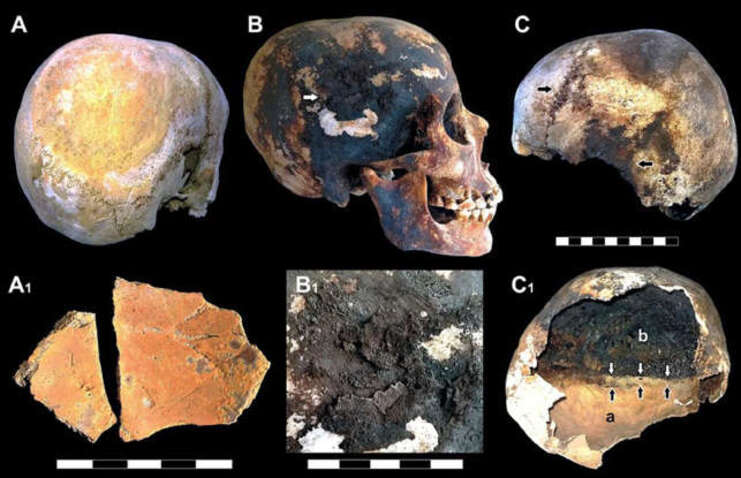
Source: PLoS One
In other words, their blood boiled, their muscles and brains turned to ash, and their skull caps even exploded outward. This horrific discovery serves as a chilling reminder of the devastating power of nature.
Instant Death: The Aftermath of Herculaneum's Eruption
The catastrophic eruption of Mt. Vesuvius in 79 AD left the city of Herculaneum in ruins. Unfortunately, this tragedy also took the lives of many of its citizens who were unable to escape in time and preferred to stay close to their loved ones.
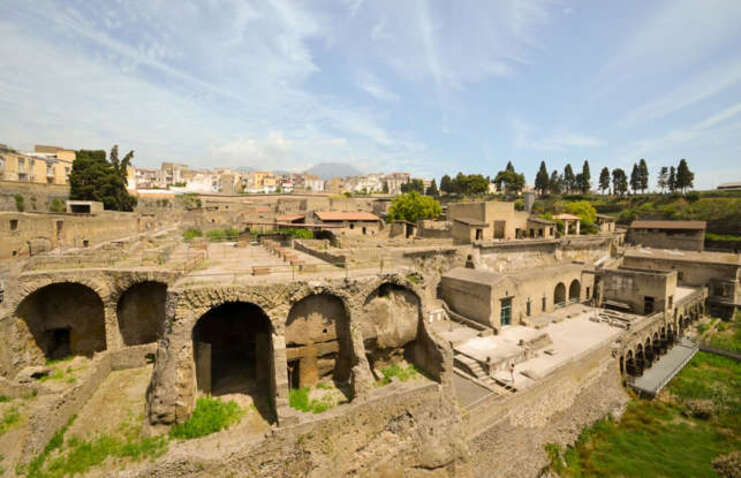
Source: Gigi Peis
Though it was a gruesome outcome, the victims probably experienced a swift death. With temperatures reaching a scorching 900°F near the volcano, the people of Herculaneum were instantly turned to ash.
Uncovering a Priceless Piece of History: Remains of an Ancient Horse Found at Pompeii
In 2018, archaeologists made a thrilling discovery – the remarkably intact remains of an ancient horse at Pompeii, along with a saddle. The horse was found in a villa belonging to a high-ranking Roman general or military member, and experts believe it was a special breed worth a great deal of money.
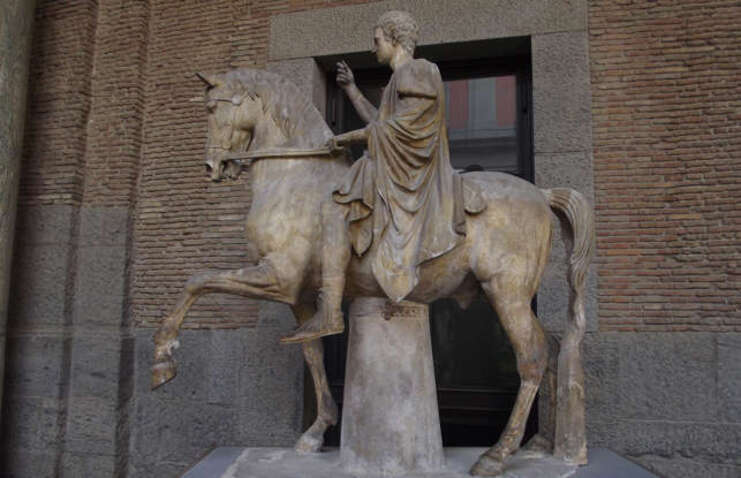
Source: Elliot Brown/Flickr/CC BY 2.0
Using a plaster injecting technique to recreate the cavities left by the decomposed body, they found key information about the horse. It was large for its time, further attesting to its value. This incredible discovery provides a fascinating peek into the past.
Unearthing a Rare Find at Pompeii - Ancient Animals!
The discovery of this remarkable horse came along with finding the remains of both a dog and pig. This Large Horse is one of the few animals to have ever been successfully cast at the historic site.

Source: Sebastian Piorek
However, what makes it even more incredible is that it has been preserved intact despite the illegal diggings and lootings that Pompeii has faced in the past few decades. The discovery of these ancient animals is certainly a unique find!
